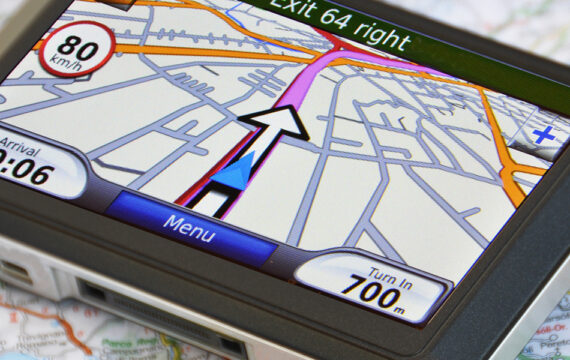As the whole world moves toward connectivity and data sharing, the automotive industry is no exception. Using vehicle connectivity, today’s cars can easily exchange information with other vehicles (V2V), devices (V2D), and infrastructure (V2I). Having years of expertise in the connected car space, Intellias is here to give you a detailed look at communication systems topology and what it really means for the future of autonomous driving.
What is connected vehicle technology?
According to Statista, the number of connected cars will amount to $357.3 million by 2020.
Stock of connected cars

Source: Statista
Leading car manufacturers aligned to enable connected future of automotive. Audi, BMW, Ford, Volvo, Tesla, and General Motors are just some of the OEMs actively pursuing connected car development.
Foley and Lardner’s survey shows that auto manufacturers consider connected cars as the focus of their companies.
Companies who agree that connected car development is their main focus

Source: 2017 Connected Cars & Autonomous Vehicles Survey
The terminology in this space is not yet stabilized and hence manufactures often stick to own namespace that is hard to understand. An essential split, though, can be made on data sharing channel and purpose. All car communication technologies happen through secure vehicular ad hoc networks (VANETs).
Cars exchange information with other objects either using Dedicated Short-Range Communication (DSRC), medium-range VANET or cellular technology, or long-range VANET. These are the main channels where WLAN IEEE 802.11, IEEE 802.3bw™-2015 100BASE-T1, 3/4/5G LTE standards dominate but the main difference among vehicular communication systems lies in their agents and features.
What V2… means?
Today, there are at least six main types of connectivity agents that are essential for autonomous driving (AD):

Let’s see how autonomous driving is expecting to leverage these technologies and what are the future opportunities for society and car industry.
V2V & V2N: Vehicle-to-Vehicle and Vehicle-to-Network

V2V&N communication technology connects vehicles to cloud services and cellular infrastructure. By using V2N, cars exchange real-time information about traffic, routes, and road situation. V2V data packages may contain information about location, direction, speed, braking status, and steering wheel position of the transmitting vehicle. These global and at-the-spot information blocks are the essential core for AD to take an appropriate driving decision.
Since V2V technology enables sensor outreach of neighbor cars, it’s more accurate and power efficient system then any on-board surround sensing. If we take it further, we’ll come up with an idea that AD is not the solution for autonomous vehicle transition from A to B, but rather a networking protocol that optimizes traffic parameters and allows all commuters to reach their destinations fast and safely.
An over-the-air upgrade is another AD essential feature enabled by V2N. As AD is a life critical application, having them in up-to-date state is the must.
V2I: Vehicle-to-Infrastructure

V2I technology allows vehicles to communicate with road infrastructure. V2I sensors collects information about traffic, traffic lights communicate its state, radar devices, cameras, and other road signals work as the sharing nodes to maximize infrastructure throughput. Even objects list lane marks or road barriers can become “smart” one day and become V2I communicators. For AD this information is critical as the vehicle may rely on stationary objects data that is specialized on certain road events. Vehicles approaching a work zone, can be notified and reduce speed. Parking lots can announce their availability at the very moment of the previous occupant left the spot.
Beyond that, through V2I, cars can collect data on the traffic flow and help drivers choose the best route. And thanks to real-time traffic updates, vehicle-to-infrastructure technology reduces fuel consumption.
With prefiltration of V2I and AD traffic can increase density (cars will be moving closer to each other and leave less clearance aside) which will quadruple current infrastructure capacity keeping the road accidents at the zero level and increasing a traffic speed.
V2P: Vehicle-to-Pedestrian

The World Health Organization reports that every year nearly 270,000 pedestrians die in road traffic accidents globally. Vehicle-to-pedestrian technology can change this devastating statistic for the better.
Through V2P technology in smartphones and wearable devices, pedestrians can share data with cars. Along with sharing location information, pedestrian’s devices can also alert drivers if, for instance, they need more time to cross the road. This technology will protect some of the most vulnerable people on the roads – elderly people and children.
V2X: Vehicle-to-Everything

Vehicle-to-everything communication allows a car to collect and share information with anything in the environment that affects it. Remarkably, V2X technology combines all the other types of vehicular communication. Therefore, vehicle-to-everything communication technology shows the most accurate information about the vehicle’s surroundings. With V2X, an ADAS is informed of anything that might happen on the road.
The US Department of Transportation says that, combined, V2V and V2I communication have the potential to reduce non-impaired crashes by 80%.
Compared to Lidar, V2X sensors have greater range and through-object and around-corner viewing capabilities.
V2X technology combines all the benefits of a connected car. It increases road safety and mobility and improves traffic flow. To top it all off, V2X technology helps to manage energy sources and is good for the environment.
An autonomous car is a connected car

Let’s summarize: connectivity is what makes autonomous cars possible. The current development aims self-driving vehicles to work without V2x, but this what can reveal a true potential of ADAS: becoming a real social, economic and transportation disruption.
Real-time data provides a lot of benefits for self-driving vehicles. Connected vehicle technologies allow cars to eliminate human error. With full 360-degree, non-line-of-sight awareness, connected vehicle technology gets more data on the surroundings than any human can comprehend. In other words, self-driving cars are better informed and safer.
Future vehicles become communication unit rather than means of transportation. We’ll be using our cars as the third place after home and office. The emergence of the connected era will require a lot of software to enable new use-cases and support business models that currently is hard to imagine. Yet, this shift to the software-first car will create a new set of challenges (like secure mobility – prevention of attacks) that must be addressed.
Intellias has been passionately working with connected car technologies for years now. Don’t hesitate to contact us to find out how we can help you provide stellar software solutions for connected vehicles.


